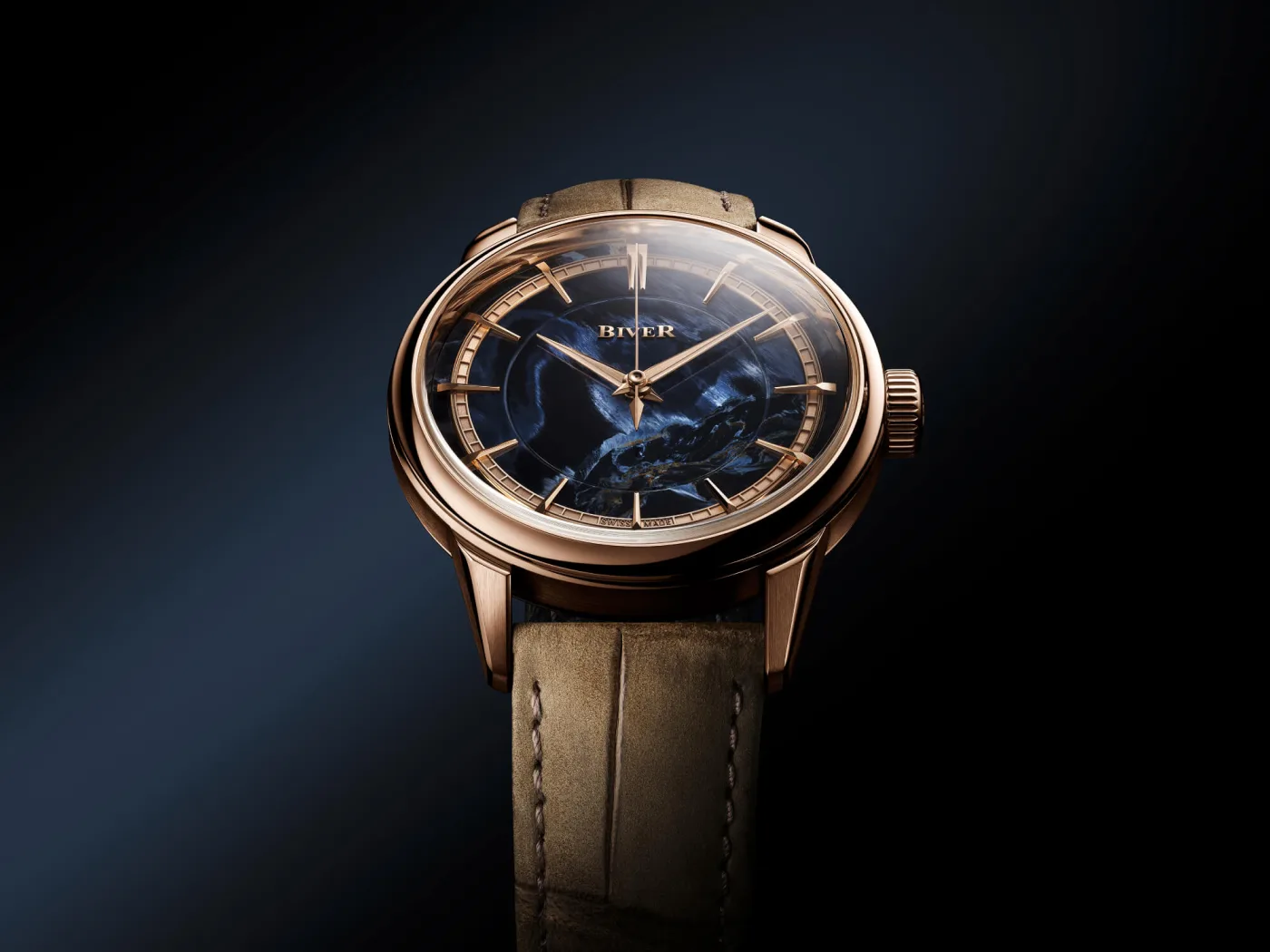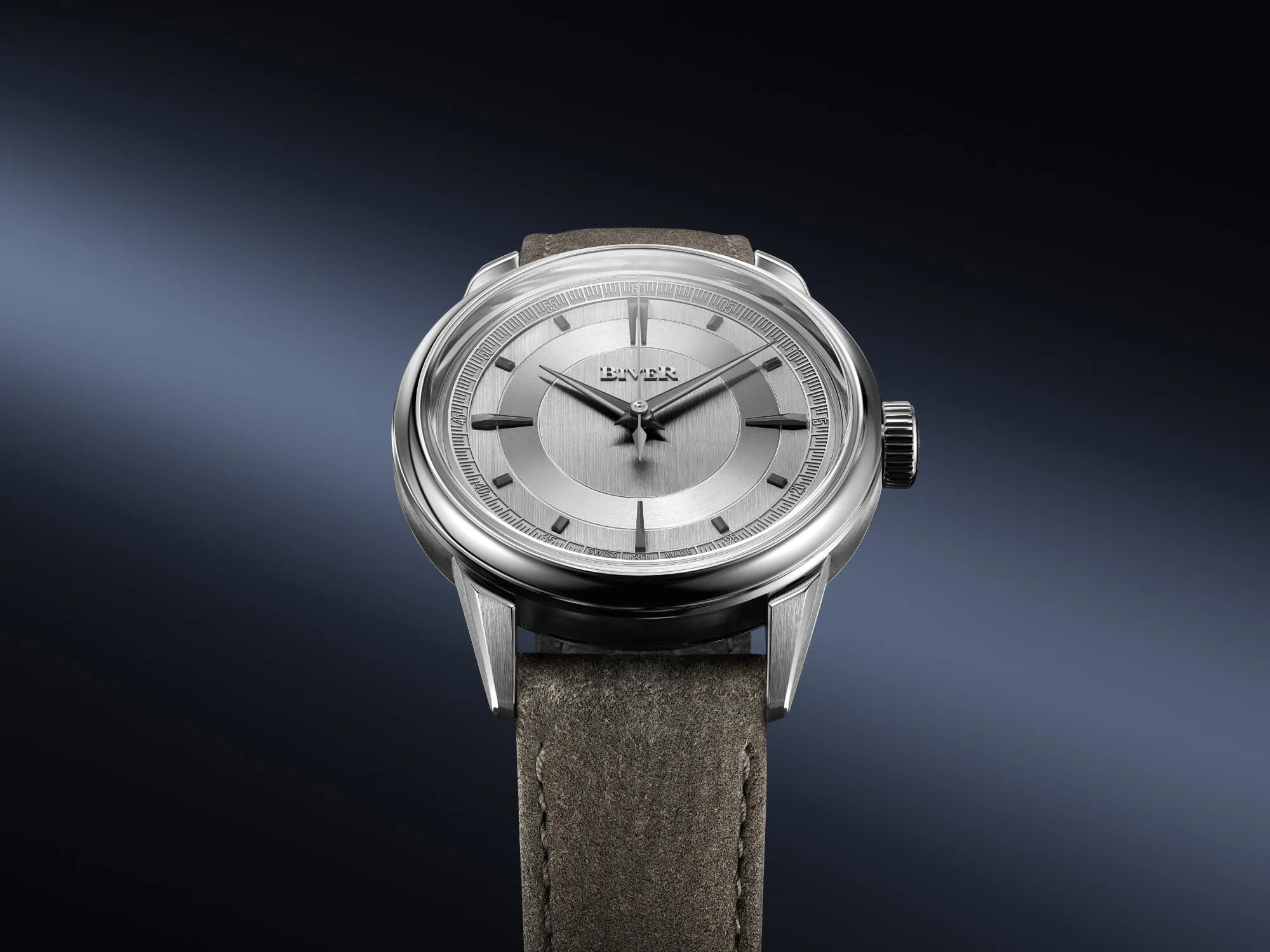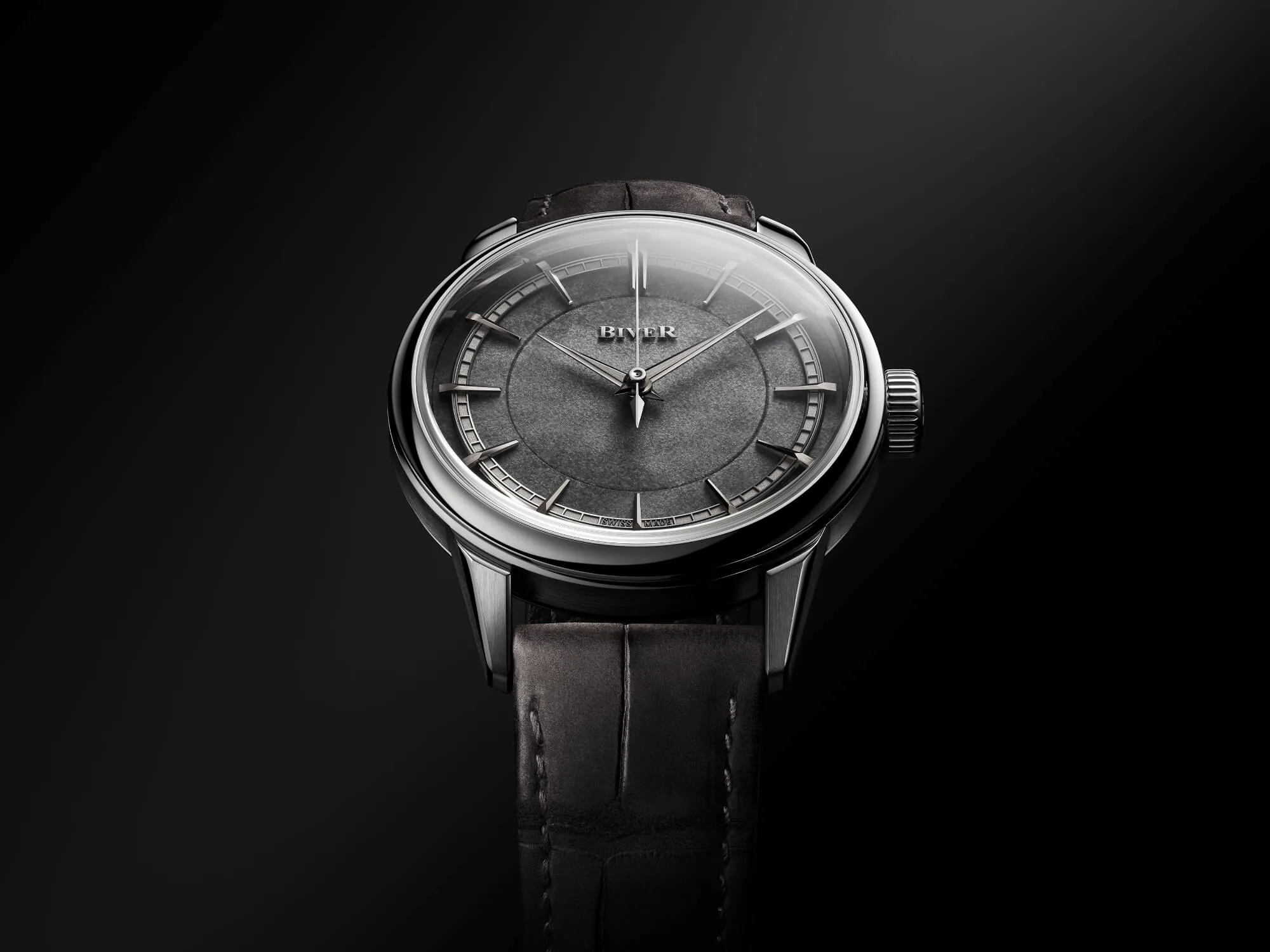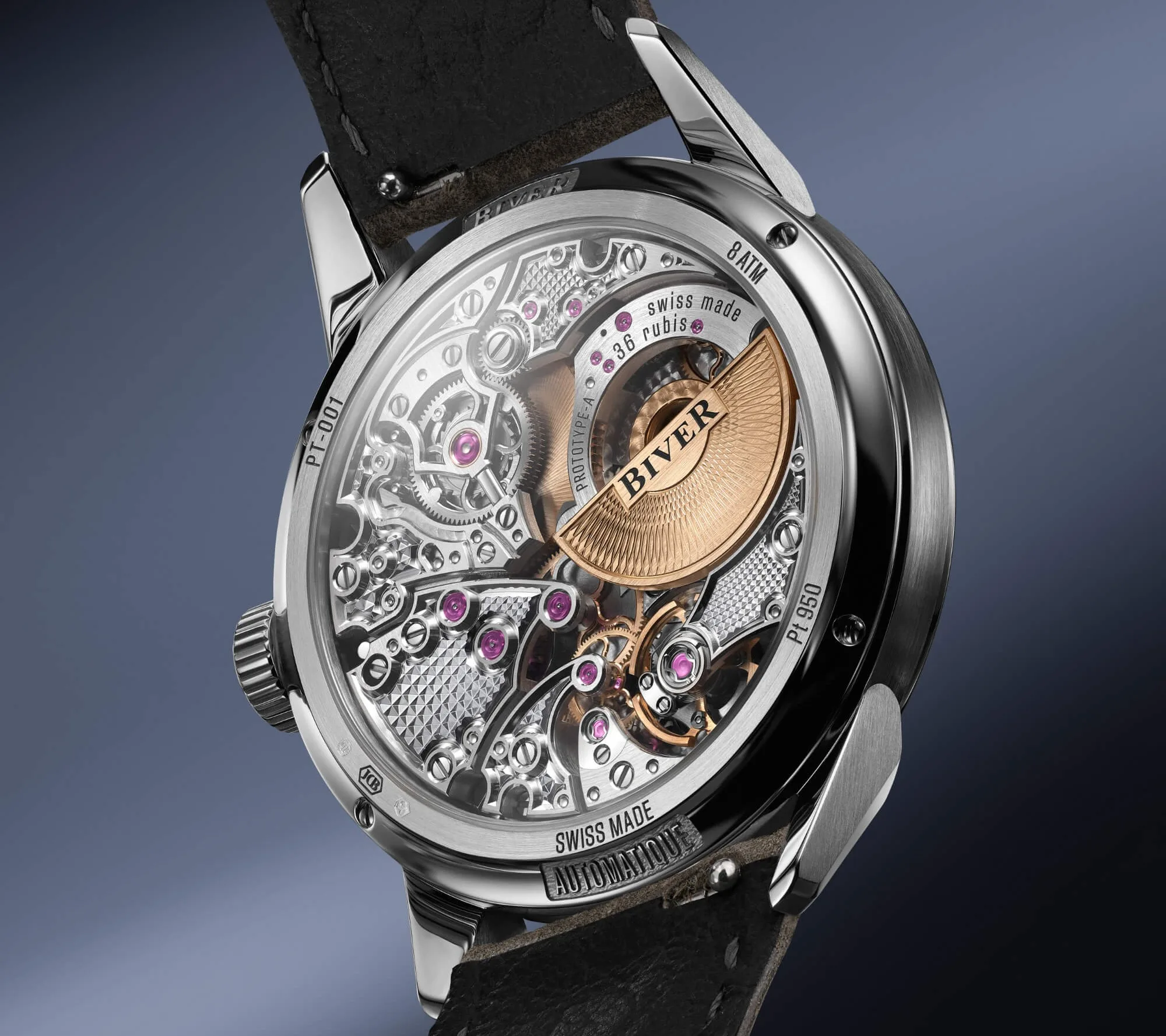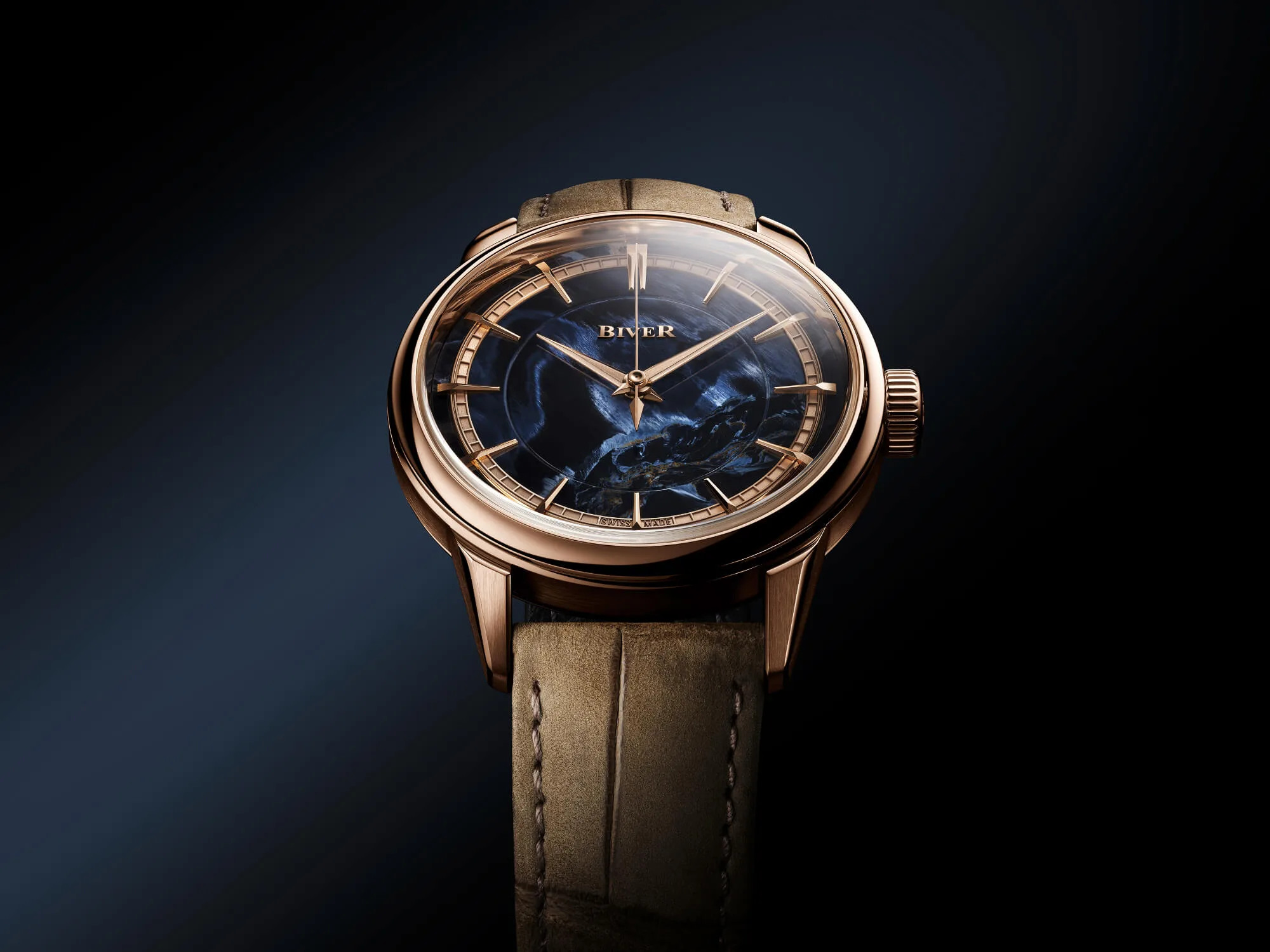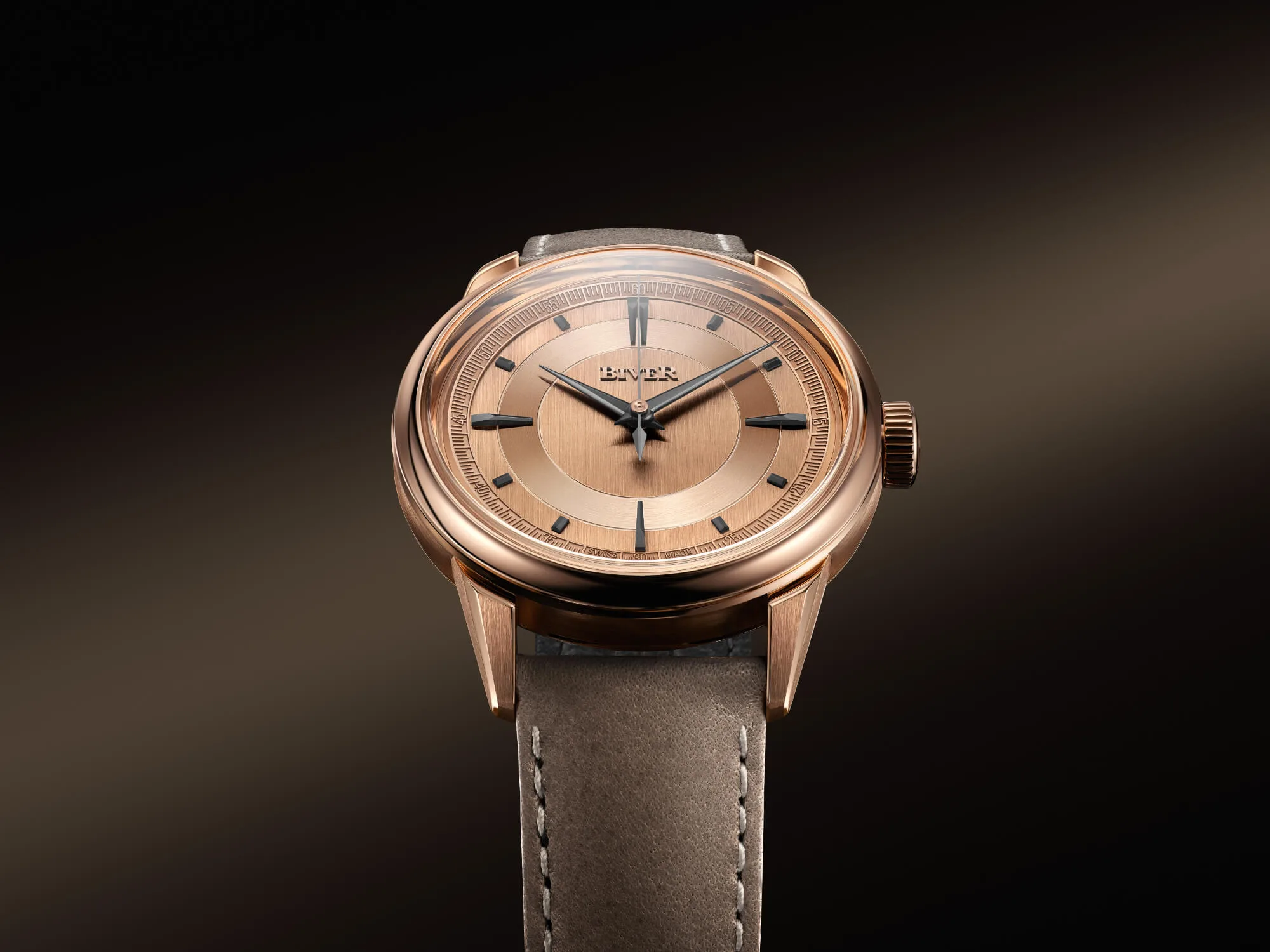BY HARLAN CHAPMAN-GREEN
Back in March 2023 horological legend Jean-Claude Biver and his son, Pierre Biver, launched their own brand of wristwatches called ‘Biver’. You may remember them as being extremely expensive, and that’s because they were. The most “affordable” version of the Carillon Tourbillon model, which comes in with a titanium case and bracelet, costs a mere $570,000.
These watches are much more “affordable”, but we’ll get to that later. They’re presented in cases made of either platinum or 18k rose gold and measure 39mm x 10mm. They come on either a leather strap or a metal bracelet matched to the case. Water resistance is 80m.
The watches do look good, and they come with a few different dial options. The standard collection offers either an 18k rose gold or 18k white gold option, depending on the case material (white gold for the platinum watch, obviously). There’s also an Atelier range which offers a choice of a polished obsidian dial or a dial made of pietersite, a variety of the mineral chalcedony. I think the stone dials are the way to go; if you’re paying for the privilege of having an exclusive name like Biver on your wrist, you might as well go all out.
Inside these watches and on display through the caseback is the self-winding calibre JCB-003. Looking at it all I can think of is “wow”, this looks good. A lot of the finishing is clous de Paris which is usually reserved for the dial side. There are also elegant shapes to all of the components, and the gold micro-rotor is a nice touch. The movement has a 65-hour power reserve and 3.5Hz beat rate, but perhaps the most intriguing part of it is that it’s made for Biver by Dubois Dépraz, which is probably most known for making the chronograph modules for the Royal Oak Offshore until recently. To be clear, they’ve done a lot more than just that, but that’s what I think of first off the top of my head.
Make no mistakes about the JCB-003 movement, though; it’s not an off-the-shelf calibre. It’s been created by Dubois Dépraz for Biver and Biver has exclusive rights to use it. This is quite common among watchmakers who don’t have mass-market production facilities; there often end up being companies which make all sorts of components, and the watchmaker whose name is on the dial finishes the parts and puts them all together. For these watches, the dials are produced for Biver by LM Cadrans SA, which makes dials for Louis Moinet and the like, and the cases are made by Efteor SA, who have made cases for A. Lange & Söhne, among many others.
I’m not sure that justifies the pricing, though. With this being an independent watchmaker that needs to cover paying all of the bills and wages as well as making a profit, you should expect the prices to be high. The starting price is CHF75,000 for the rose gold model with the standard dial. If you want a one of the stone dials from the Atelier collection they’ll add around CHF14,000 to the bill. A rose gold bracelet adds CHF19,000 to the cost, and a platinum bracelet increases the expenditure by CHF29,000. The priciest model you can buy is the platinum watch on the platinum bracelet with the grey obsidian dial, which will cost you an eye-watering CHF121,000. They’re also limited to 25 examples in each metal with the standard dial, plus another 18 examples in each metal with the Atelier dial, meaning Biver is making 86 watches in total.
Is this the most egregious costing for a watch in history outside of auctions? Sadly, it’s probably the new norm. The cost of everything is getting more expensive, and as I said, there are bills to pay; even more affordable watches are becoming worryingly costly. At least the folks at Biver have been honest about the brand, that it’s something they wanted to do for some fun instead of spinning a tale of historic watchmaking “redefined for the modern era”. I’ve had enough of that for the time being.

